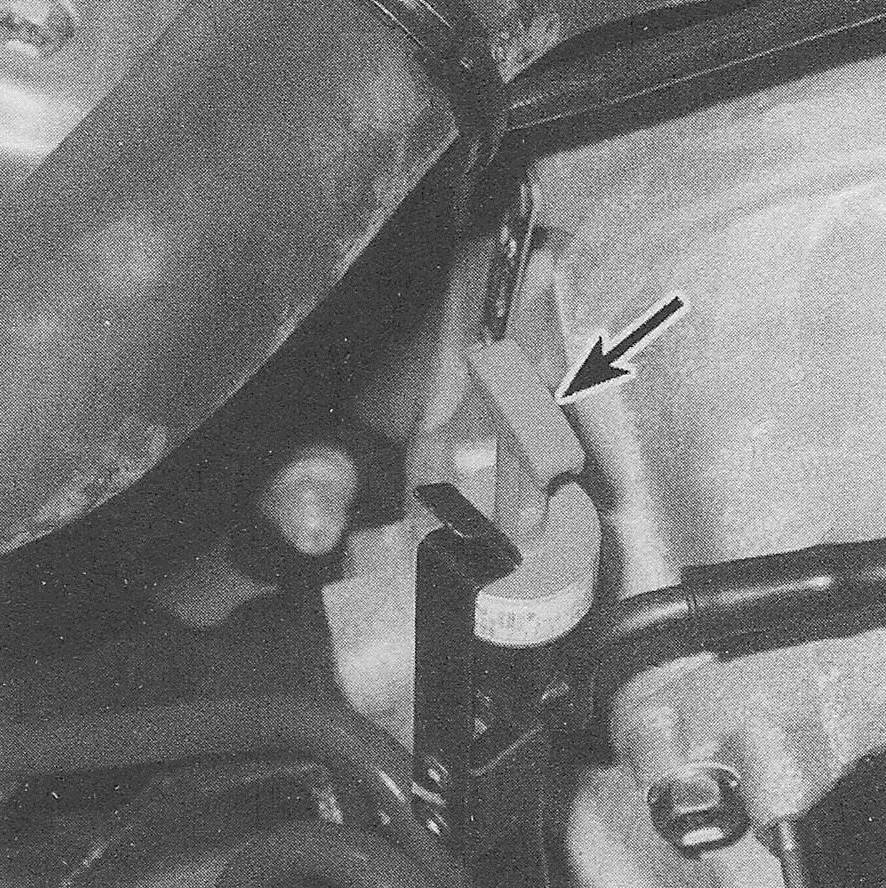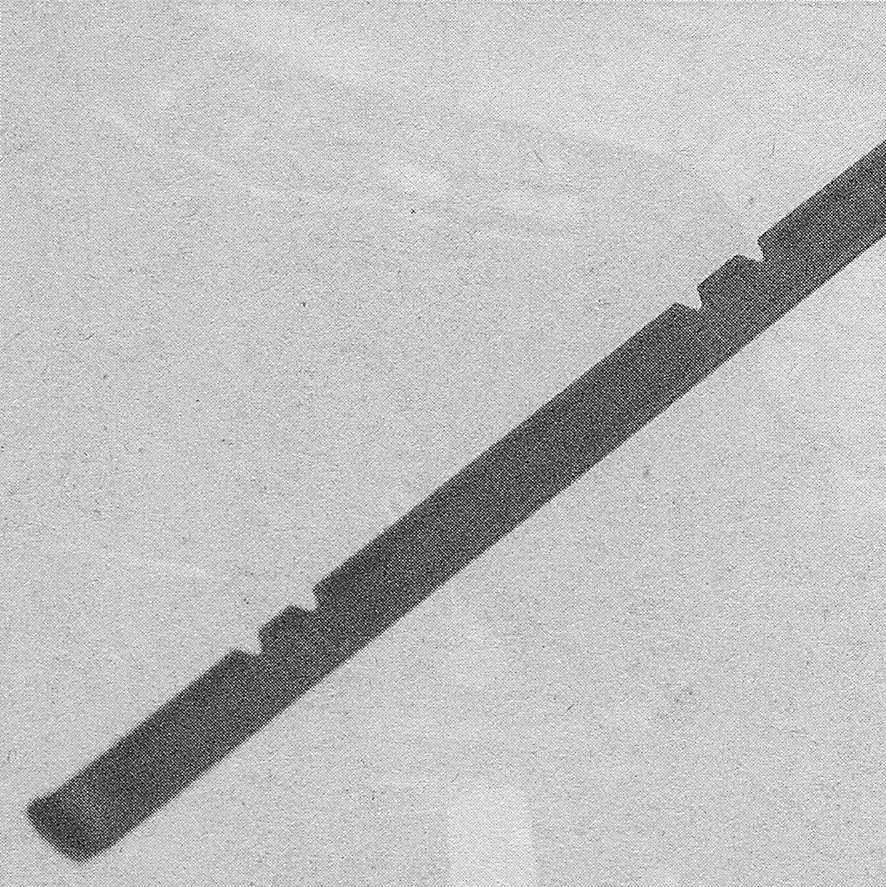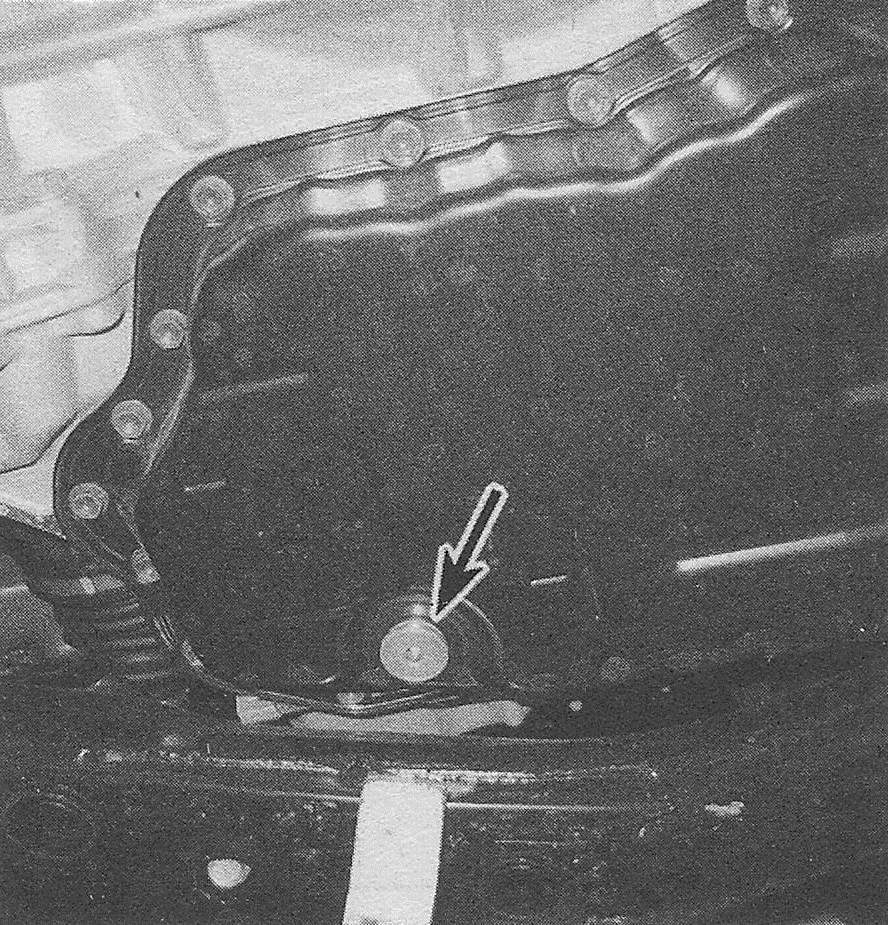Automatic transaxle fluid level check
1. The level of the automatic transaxle fluid should be carefully maintained. Low fluid level can lead to slipping or loss of drive, while overfilling can cause foaming, loss of fluid and transaxle damage.
2. The transaxle fluid level should only be checked when the transaxle is hot (at its normal operating temperature). If the vehicle has just been driven over 10 miles (15 miles in a frigid climate), and the fluid temperature is 160 to 175-degrees F, the transaxle is hot.
Caution: If the vehicle has just been driven fora long time at high speed or in city traffic in hot weather, or if it has been pulling a trailer, an accurate fluid level reading cannot be obtained. Allow the fluid to cool down for about 30 minutes.
3. If the vehicle has not been driven, park the vehicle on level ground, set the parking brake, then start the engine and bring it to operating temperature. While the engine is idling, depress the brake pedal and move the selector lever through all the gear ranges, beginning and ending in Park.
2009 and earlier four-cylinder models (U250E transaxle)
4. With the engine still idling, remove the dipstick from its tube (see illustration). Check the level of the fluid on the dipstick and note its condition. Refer to the underwood photographs at the beginning of this Chapter for the exact location of the automatic transaxle dipstick.
7.4 On 2009 and earlier four-cylinder models, the automatic transaxle dipstick is located next to the battery

5. Wipe the fluid from the dipstick with a clean rag and reinsert it back into the filler tube until the cap seats.
6. Pull the dipstick out again and note the fluid level (see illustration). If the transmission is cold, the level should be in the COOL range on the dipstick. If it is hot, the fluid level should be in the HOT range. If the level is at the low side of either range, add the specified automatic transmission fluid through the dipstick tube with a funnel.
7.6 If the automatic transaxle fluid is cold, the level should be between the lower two notches; if it’s at normal operating temperature, the level should be between the upper notches on the dipstick (2009 and earlier four-cylinder models)

7. Add just enough of the recommended fluid to fill the transmission to the proper level. It takes about one pint to raise the level from the low mark to the high mark when the fluid is hot, so add the fluid a little at a time and keep checking the level until it is correct. Proceed to Step 12.
2 010 and later four-cylinder models and all V6 models
Note: These models are not equipped with an automatic transaxle fluid dipstick.
Note: The vehicle must be level for this check. If there is not enough room to crawl under the vehicle, raise both ends and support it securely on jack stands.
Note: The fluid temperature must be between 95 to 113-degrees F (35 to 45-degrees C) on four-cylinder (U760E) and 104 to 113-degrees F (40 to 45-degrees C) on V6 (U660E) models to perform this check.
8. Set the parking brake and block the rear wheels. With the engine idling, remove the overflow plug from the bottom of the transaxle fluid pan (see illustration).
7.8 Transaxle fluid overflow plug ( U660E/U760E transaxles)

9. If the fluid runs out of the hole, allow it to drip until it stops. If no fluid comes out of the hole, remove the fill plug, located on the side of the transaxle housing, near the rear.
10. Add the proper type of transmission fluid (see this Chapter’s Specifications) until fluid flows from the overflow hole in the bottom of the pan. When the flow of fluid slows to a trickle, install the overflow plug and tighten it to the torque listed in this Chapter’s Specifications.
11. Tighten the fill plug to the torque listed in this Chapter’s Specifications.
All models
12. The condition of the fluid should also be checked along with the level. If the fluid at the end of the dipstick (if equipped) is black or a dark reddish-brown color, or if it emits a burn7ed smell, the fluid should be changed (see Automatic transaxle fluid change). If you are in doubt about the condition of the fluid, purchase some new fluid and compare the two for color and smell.